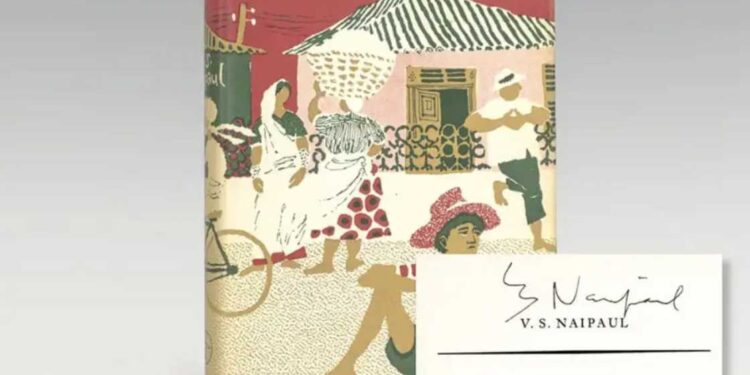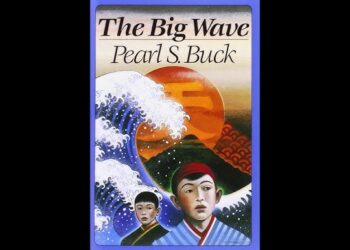Introduction
Summary of Miguel Street by V.S. Naipaul “Miguel Street,” published in 1959, is a semi-autobiographical novel by V.S. Naipaul that captures the vibrant and tumultuous life of a street in Port of Spain, Trinidad. The book is structured as a series of interconnected vignettes that explore the lives of various characters living on Miguel Street, providing a rich tapestry of experiences, aspirations, and the everyday struggles of Trinidadian society.
Summary of Miguel Street by V.S. Naipaul Through his poignant storytelling, Naipaul delves into themes of identity, colonialism, and the quest for meaning in a post-colonial context. The novel’s episodic structure allows for deep character development and a nuanced exploration of the social and cultural dynamics at play. With humor and insight, Naipaul paints a vivid portrait of a community shaped by its history, challenges, and resilience.
Plot Summary
1. Setting and Context
The novel is set in Port of Spain during the mid-20th century, a time when Trinidad was grappling with the legacies of colonialism and the complexities of its cultural identity. The titular Miguel Street serves as a microcosm of Trinidadian society, showcasing a diverse array of characters, each representing different facets of life in the Caribbean.Summary of Miguel Street by V.S. Naipaul
Summary of Miguel Street by V.S. Naipaul The narrative unfolds through the eyes of a young boy, who remains unnamed but embodies Naipaul’s own experiences growing up in Trinidad. This perspective allows readers to witness the richness of the street’s life, as well as the challenges and aspirations of its inhabitants.
READ MORE
2. The Narrator’s Perspective
Summary of Miguel Street by V.S. Naipaul The unnamed narrator serves as the lens through which the stories of Miguel Street are told. His observations provide a sense of innocence and curiosity as he navigates the complexities of life in his neighborhood. As he grows older, the narrator’s understanding of the world deepens, revealing the multifaceted nature of the community and its inhabitants.
Summary of Miguel Street by V.S. Naipaul The narrative voice is marked by Naipaul’s characteristic wit and sharp social commentary, highlighting the absurdities and tragedies that shape the lives of the characters. The narrator’s reflections on his surroundings create a poignant contrast between childhood innocence and the harsh realities of adult life.

3. Key Characters and Vignettes
Summary of Miguel Street by V.S. Naipaul “Miguel Street” features a diverse cast of characters, each contributing to the rich tapestry of life on the street. The following are some of the prominent figures:
- Man-man: A man who believes he is a great artist but is largely regarded as mad. His eccentric behavior and artistic aspirations highlight the theme of unfulfilled potential and the struggle for recognition in a society that often overlooks individuality.
- The Pappyshow: A street performer who captivates audiences with his elaborate stories and theatrical performances. He represents the intersection of art and survival, showcasing how creativity can be a means of coping with the challenges of life in a post-colonial society.
- Mrs. Poynting: The local teacher who is passionate about education but struggles against the societal limitations imposed on her. Her character embodies the tension between aspiration and reality, as she seeks to uplift her community through education.
- Bolo: A young man with dreams of becoming a mechanic. His ambitions are thwarted by the limitations of his environment, reflecting the challenges faced by many young people in Trinidad.
- The narrator’s father: A more traditional figure who embodies the older generation’s values and attitudes, often clashing with the aspirations of the younger characters.
These vignettes are woven together to form a cohesive narrative, exploring themes of identity, aspiration, and the complexities of life in a post-colonial context.
READ MORE
4. Themes of Identity and Aspirations
One of the central themes of “Miguel Street” is the exploration of identity in a post-colonial society. The characters grapple with their cultural heritage and the impact of colonialism on their lives. The aspirations of the characters reflect a desire for self-definition and recognition within a society that often imposes limitations on their potential.
Naipaul’s portrayal of the characters’ dreams and disappointments underscores the tension between individual aspirations and the societal realities they face. The struggles of figures like Man-man and Bolo illustrate the complexities of navigating identity in a context shaped by historical and cultural legacies.
5. Colonial Legacy and Cultural Conflict
The legacy of colonialism looms large over the characters of Miguel Street. The novel explores the tensions between different cultural identities, as the characters navigate the remnants of colonial rule and the quest for self-determination. The interactions between the various characters reflect the complexities of cultural conflict in a society that is still coming to terms with its colonial past.
Naipaul’s nuanced portrayal of the characters’ lives reveals the intersection of personal and collective histories, highlighting how the colonial legacy shapes their experiences and aspirations. The characters often find themselves caught between traditional values and the pressures of modernity, creating a rich landscape for exploring cultural identity.
6. Humor and Absurdity
Naipaul employs humor throughout “Miguel Street” to highlight the absurdity of life in Trinidad. The comedic elements serve as a coping mechanism for the characters, allowing them to navigate the challenges of their existence with resilience and wit.
The interactions between the characters often lead to humorous situations that reflect the absurdities of their lives. For instance, Man-man’s delusions of grandeur juxtaposed with his reality create a poignant yet comedic portrayal of unfulfilled dreams.
7. The Role of Community
Summary of Miguel Street by V.S. Naipaul The sense of community on Miguel Street is a vital aspect of the narrative. The characters’ lives are interconnected, and their relationships reflect the bonds that develop in the face of adversity. The communal spirit serves as both a source of support and a reminder of the limitations imposed by their environment.
The narrator’s observations highlight the richness of life on Miguel Street, as characters come together to celebrate, mourn, and navigate the complexities of existence. This sense of belonging is contrasted with the individual struggles each character faces, illustrating the dual nature of community as both a refuge and a constraint.
READ MORE
8. The Climax and Resolution
As the narrative unfolds, the characters’ dreams and aspirations are often thwarted by the harsh realities of life on Miguel Street. The climax of the novel occurs as the narrator confronts the complexities of adulthood and the inevitability of change.
Summary of Miguel Street by V.S. Naipaul The resolution is marked by a sense of ambivalence, as the characters’ journeys reveal the ongoing struggles of identity and belonging in a post-colonial context. The narrator’s reflections on his experiences underscore the bittersweet nature of life on Miguel Street, highlighting the interplay between hope and despair.

Conclusion
Summary of Miguel Street by V.S. Naipaul “Miguel Street” is a rich and nuanced exploration of life in post-colonial Trinidad, capturing the aspirations, struggles, and absurdities of its characters. V.S. Naipaul’s debut novel combines humor with poignant social commentary, creating a vibrant portrayal of a community grappling with its identity and history.
Through the lens of the unnamed narrator, Naipaul delves into themes of identity, cultural conflict, and the complexities of human aspiration, offering readers a profound insight into the lived experiences of the characters. “Miguel Street” stands as a testament to the resilience of the human spirit and the enduring quest for meaning in a changing world.Summary of Miguel Street by V.S. Naipaul
FAQ
1. What is the main theme of “Miguel Street”?
The main themes include identity and aspirations, the impact of colonial legacy, cultural conflict, the absurdity of life, and the role of community in shaping individual experiences.
2. Who is the protagonist of the novel?
The protagonist is an unnamed narrator who reflects on his childhood experiences growing up on Miguel Street and the lives of its inhabitants.
3. How does Naipaul portray the impact of colonialism in the novel?
Naipaul critiques the remnants of colonialism in Trinidad, exploring the tensions between cultural identities and the challenges faced by characters in their quest for self-definition.
4. What role does humor play in the narrative?
Humor serves as a coping mechanism for the characters, highlighting the absurdities of their lives while providing a poignant commentary on their struggles and aspirations.
5. How does the sense of community shape the narrative?
The community on Miguel Street serves as both a source of support and a reminder of the limitations faced by its inhabitants. The characters’ relationships reflect the interconnectedness of their lives in navigating shared challenges.
6. What is the significance of the character Man-man?
Man-man embodies the theme of unfulfilled potential and the struggle for recognition. His delusions of grandeur provide a humorous yet poignant insight into the complexities of aspiration.
7. How does the narrator’s perspective evolve throughout the novel?
The narrator’s perspective matures as he grapples with the realities of adulthood, reflecting on his experiences and the complexities of identity and belonging in a post-colonial context.
8. What is the conclusion of the novel?
The conclusion leaves readers with a sense of ambivalence, highlighting the ongoing struggles of the characters and the interplay between hope and despair in their lives.
READ MORE

















